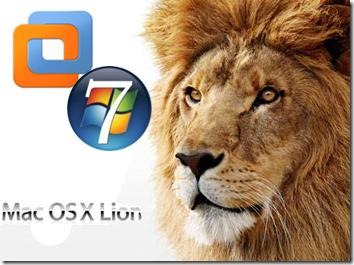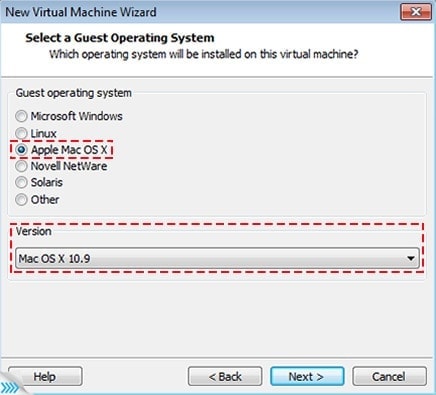If your machine is part of the mainstream configuration, you can discard the traditional real native partition installation method, while the use of virtual machine method described in this article, not only greatly reduce the problems encountered difficult, but also in the use of Mac OS X to get the experience is excellent the. (This tutorial configuration needs: support hardware virtualization technology (Virtualization) of the CPU. Current mainstream Intel Core series and AMD Athlon series CPU virtualization technology is supported, the name was Intel VT-x and AMD-V.)
VMware Workstation will not Allow you to install VMware Mac OS X by default.The Patch Tool is a tool that makes it possible to run macOS Mojave 10.14 on VMware with ease. Download the Patch Tool. VMware Fusion 8 and Fusion 8 Pro-the latest versions of its virtualization software for running Windows on a Mac without rebooting-include full support for Windows 10, OS X El Capitan, and the latest Retina Macs, in addition to always. Not an alternative? Report a problem.
Description of the whole process
Preparatory work
Installing VMware
Crack VMware supports Mac OS X
In VMware Install Mac OS X
Finishing work late
Preparation
This tutorial method used by the virtual machine, provided that the machine's CPU must support hardware virtualization technology. Readers can be CPU-V or CPU-Z and other tools to test the result. Open CPU hardware virtualization technology can be turned on via the motherboard BIOS settings.
Download and install VMware Workstation VMware can go to the official website or on the ed2k network search download (recommended). Described here no longer compile.
Apple systems on Mac OS X installation disc image, use the dmg format of the original image. I recommend to search for ed2k network download (recommended), the keyword is 'Mac OS X Mountain Lion dmg' or 'Mac OS X Lion dmg'. Described here no longer compile.

Crack VMware Workstation supports Mac OS X
Here we need to use the tool 'Workstation and Fusion Mac OS X Unlocker'
VMware Workstation and complete the installation after the restart, completely unpack Unlocker compressed package to the administrator mode windows/install.cmd.

Unlocker will automatically stop VMware services, backup VMware program files, program files crack VMware, restart the VMware service and a series of operations, and will automatically end the command line window.
After the break VMware has created a virtual machine system selection dialog:
Create Mac OS X, VMware virtual machines
After Unlocker crack, start VMware Workstation normally create a virtual machine, select 'Apple Mac OS X' (depending on the Mac OS installation disk in the system, select the corresponding version of the correct version, here I use a Mac OS X Mountain Lion, version 10.8 64-bit). Creation process has the following non-default configuration:
(1) in the processor options, select 'Number of cores per processor (each processor cores)' for the two, which can induce a VMware virtual machine automatically enables advanced hardware virtualization technology.
(2) after created, first click on the 'Edit virtual machine settings', the hardware's 'Floppy' delete option is enabled in the display 'Accelerate 3D graphics'.
(3) In Virtual machine configuration, in the Advanced Settings, set the priority of the input capture 'high', and check 'Disable memory page trimming.
With a text editor (such as Notepad) to edit the virtual machine files (where the author is E:Program Files(x86)Virtual_MachinesMac OS XMac OS X.vmx), add a line at the end of the file:
This operation is used to disable the VMware virtual machine is placed on your hard disk memory mirroring prevents the virtual machine hard disk read and write operation occurs during the busy horrors.
Start the VMware virtual machine and install Mac OS X
Edit the virtual machine configuration 'CD / DVD' option in the 'Use ISO image file' at the choice of our Mac OS X installation disc image. (Please select the browse file dialog box when the file type, select 'All Files (*. *)', You can see the file name suffix for the dmg image file.) Confirmation is complete, start the VMware virtual machine.
Start the virtual machine, the virtual machine default boot from the CD, the Apple Logo appears after officially came to Mac OS X installation interface.
In the 'Mac OS X Utilities' select 'Disk Utility', select the first hard drive on the left and on the right select 'Erase' (the 'Format' select 'Mac OS X Extended (Journaled)'), Click the 'Erase' button to format the current drive.
After formatting the hard disk partition, back to 'Mac OS X Utilities' and click 'Install Mac OS X', enter the installation process.
Completed in a VMware virtual machine after installing Mac OS X, the first thing of course is to install VMware Tools. VMware Tools includes the VMware virtual machine 'hardware' drive, the virtual machine and the host communication between functional support.
Tools used herein Attachments Download
VMware is rolling out major upgrades to Fusion for Mac and Workstation for Windows and Linux, allowing Fusion to take advantage of Lion-specific features of Mac OS X, and boosting integration between Workstation and vSphere to make life easier for developers and IT pros.
VMware Fusion 4, available for download today on VMware’s website, boosts the speed of Windows applications running in a virtual machine on Mac desktops, while allowing them to be added to Launchpad and Mission Control, the new application organization features of Lion. Users can also switch between Windows applications using Lion’s new trackpad gestures and run apps in full-screen mode.
Because Lion allows users to run multiple copies of Mac OS X on the same machine, Fusion 4 adds support for this feature, “allowing users to get more from their Mac by running OS X Lion, OS X Lion Server, Mac OS X Snow Leopard Server and Mac OS X Leopard Server in virtual machines,” VMware says. These new features bring VMware up to par with rival Parallels, whose Desktop for Mac product was upgraded earlier this month to support Launchpad and Mission Control, full-screen Windows apps, and the ability to run multiple copies of OS X on the same machine.
VMware is simultaneously upgrading Workstation, the company’s first product released 12 years ago, to the eighth major version, bringing enhanced integration with vSphere, VMware’s flagship hypervisor and server virtualization management software.
Workstation for Windows and Linux is targeted at IT administrators who need to test new operating system releases or application patches, as well as business users like sales pros who need to demo apps running on a laptop, says VMware’s Pat Lee, director of end-user computing.
Workstation 8, the biggest upgrade in several years, is focused on letting Workstation users take greater advantage of network-connected resources, Lee says.
For example, Workstation 8 lets users drag and drop a virtual machine from the desktop and upload it to vSphere so it can run on ESXi Server. Prior to this upgrade, that process required downloading a separate tool and was a bit cumbersome, Lee says. The new Workstation can also act as a server, allowing workgroups to share access to virtual machines over a customer’s network.
Vmware Workstation Support Mac Os
Additionally, Workstation virtual machines can now use up to 64GB of RAM, double the previous limit, and support USB 3.0 and Bluetooth. VMware said both Workstation and Fusion have improved 3D graphics performance along with simplified menus and user interfaces.

VMware declined to say how many users of Workstation exist, but the integrations with vSphere seem designed to maintain the product’s importance as the IT world moves to more heavily virtualized infrastructures. Fusion for Mac, meanwhile, appeals to a more general audience of users who have switched from Windows to Mac, but also has uses for developers. Fusion supports more than 200 guest operating systems, including pretty much any type of Linux or Unix, Lee says. Enhanced snapshot functionality, meanwhile, can help users roll back to previous versions of an operating system, just like you can in Mac’s Time Machine, in case a change made to the system doesn’t work as expected.

Fusion 4’s full price is $79.99, but is available until the end of the year for $49.99, and customers who purchased Fusion 3 on or after July 20 will get a free upgrade. Workstation 8 costs $199, or $99 for upgrades from versions 6 or 7.
Vmware Workstation Mac Os Unlock
Update: One reader asks if Fusion will support the desktop version of Snow Leopard. We asked VMware and received this response: 'Based on the current Apple EULA, you are only allowed to virtualize the server version of Leopard and Snow Leopard. We are able to virtualize everything that they let us virtualize including OS X Lion Client & Server.'
